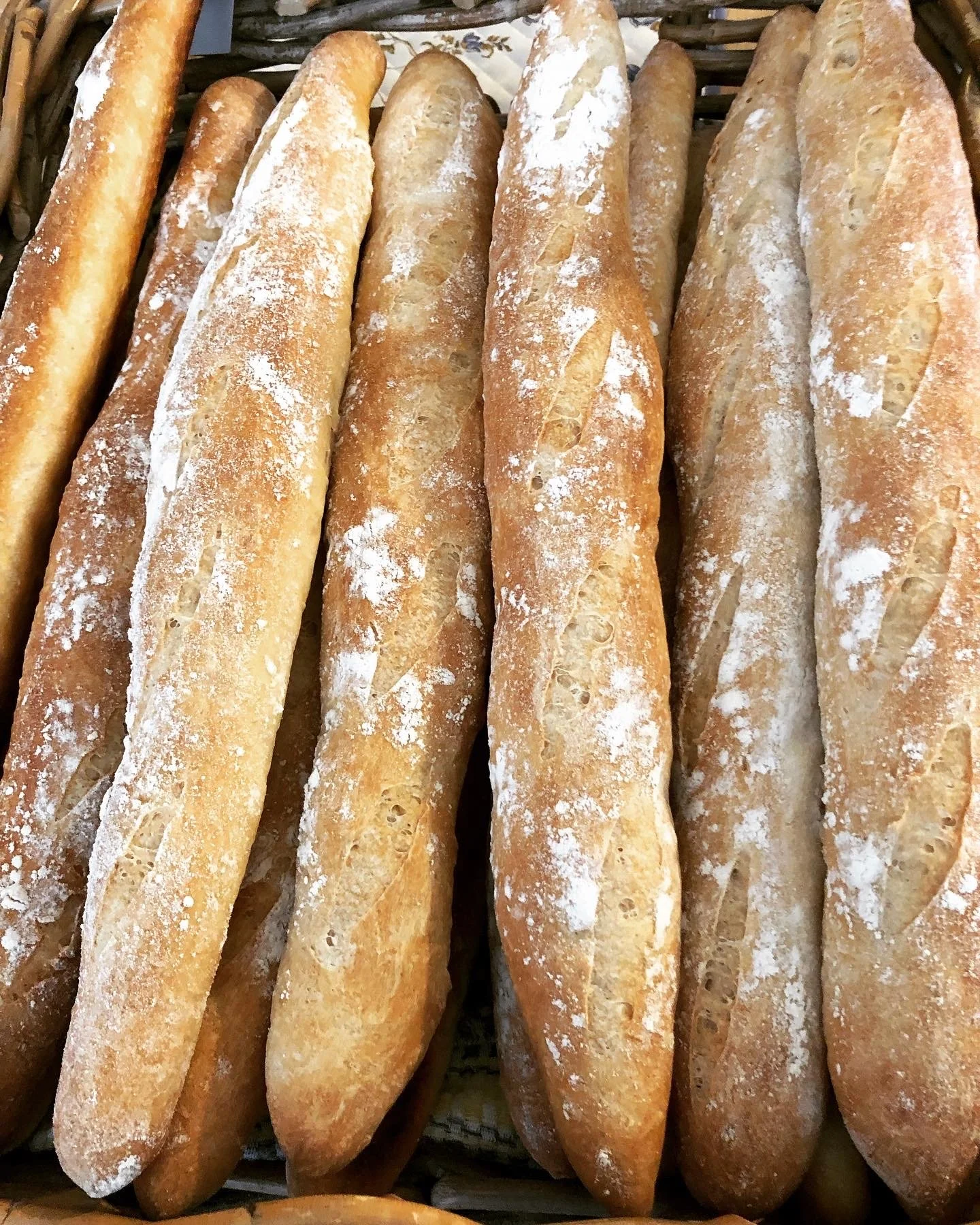Bringing Southern France to Northwest Indiana
Since this year will be remembered in our household as the “Year We Didn’t Go To Southern France”, I’ve been pulling out all the stops in my Mediterranean memories. Last week, that meant looking for and finding recipes for breads that we have purchased at local bakeries or markets when we stay at our little cottage in Le Brusc.
Mouna is one of the more special loaves or little breads we’ve eaten. It came across the Mediterranean Sea to southern France from Algeria and is now often found in bakeries on weekends or on holidays. The sweet brioche-style dough flavored with citrus and anise is shaped into a round loaf that is brushed with egg. It comes out of the oven with a glowing sheen. It is light and delectable and especially good with coffee or cheese. Many bakeries also make a smaller version that works well as a morning pastry.
I checked my pantry and I had all the ingredients on hand so I had to make it. When I create a new loaf of bread, there’s always that moment when I’m wondering if it will be anything like what I remember. As I zested the orange and lemon and melted the butter, the smells already told me I was on the right track. Then as I kneaded the dough before its first rise, the texture beneath my hands felt just right. Since this dough takes two long rises, I had to wait five hours or so to see the final result. The loaves came out exactly as I had imagined them. Airy, nicely rounded and with a lovely sheen, they reminded me exactly of the ones I’d bought on market day at the bakery in Six-Fours-les-Plages.
It so happened that shortly after I made them, I ran into and met a French speaking woman from Algeria. I heard her mention a typical French expression to her small son. Since my ears tune into French, I turned around and introduced myself and discovered that she lives here in town. Knowing that Mouna is Algerian, I asked her, “Do you know Mouna?” “Mais oui”, she said. “I love Mouna!”. How could I not offer her a loaf? And that’s exactly what I did. She seemed pretty excited about the loaf of Mouna and the French conversation. Once I hear back from her, I’ll know if it’s been approved by someone who grew up with it…
Meanwhile, on a sunny afternoon, I cut several slices, put them on board with some good cheese and made myself a Monaco, that typical refreshing drink I order when I’m sitting at a café at the port of Le Brusc. I enjoyed every sip and bite under the bright blue sky and warm sun of northern Indiana. I’m putting it on my regular baking rotation for the next couple of weeks. By then, I’ll probably have another quest to pursue! Here’s the recipe if you want to try it.
Mouna
¾ c. milk
1 T. yeast
4 c. flour
1 t. anise seeds
3 eggs
1 ¼ c. confectioners sugar
6 ½ T. melted butter
1 t. salt
1 T. vanilla
Zest and juice of ½ orange
Zest of ½ lemon
1 T. Rum
1 T. olive oil
½ t. orange essence
1 T. honey
In a small saucepan, heat the milk and the anise seeds until just hot. Let cool to lukewarm. Then strain the milk and remove the seeds. In a small bowl, mix 1 c. flour and the yeast. Add milk and beat until smooth. Let rest a half an hour.
Meanwhile, in a big bowl, mix the eggs, sugar, butter, salt, vanilla, rum, zests and juice, olive oil and honey. Beat gently until nicely combined. Add the flour mixture and continue to beat. Slowly, add the remaining flour, firmly incorporating it with each addition until the dough is soft but no longer sticky. Dump the dough out onto a counter and knead, adding flour as needed, until it is smooth and elastic, about 5 or so minutes. Let rise in a greased bowl covered with a damp towel for 2 1/2 to 3 hours, until nicely doubled. Turn out onto a counter and cut into three. Shape each piece into a ball and place nicely spaced out on a parchment covered baking pan. Let rise, covered with a towel, for 1 ½ to 2 hours until your finger leaves a nice indentation in the side. Preheat the oven to 375°. Brush with beaten egg and sprinkle with pearl sugar. Cut a cross in the top. Bake for 35 minutes, turning the pans halfway through to make sure the loaves brown evenly. Remove and cool on racks.










